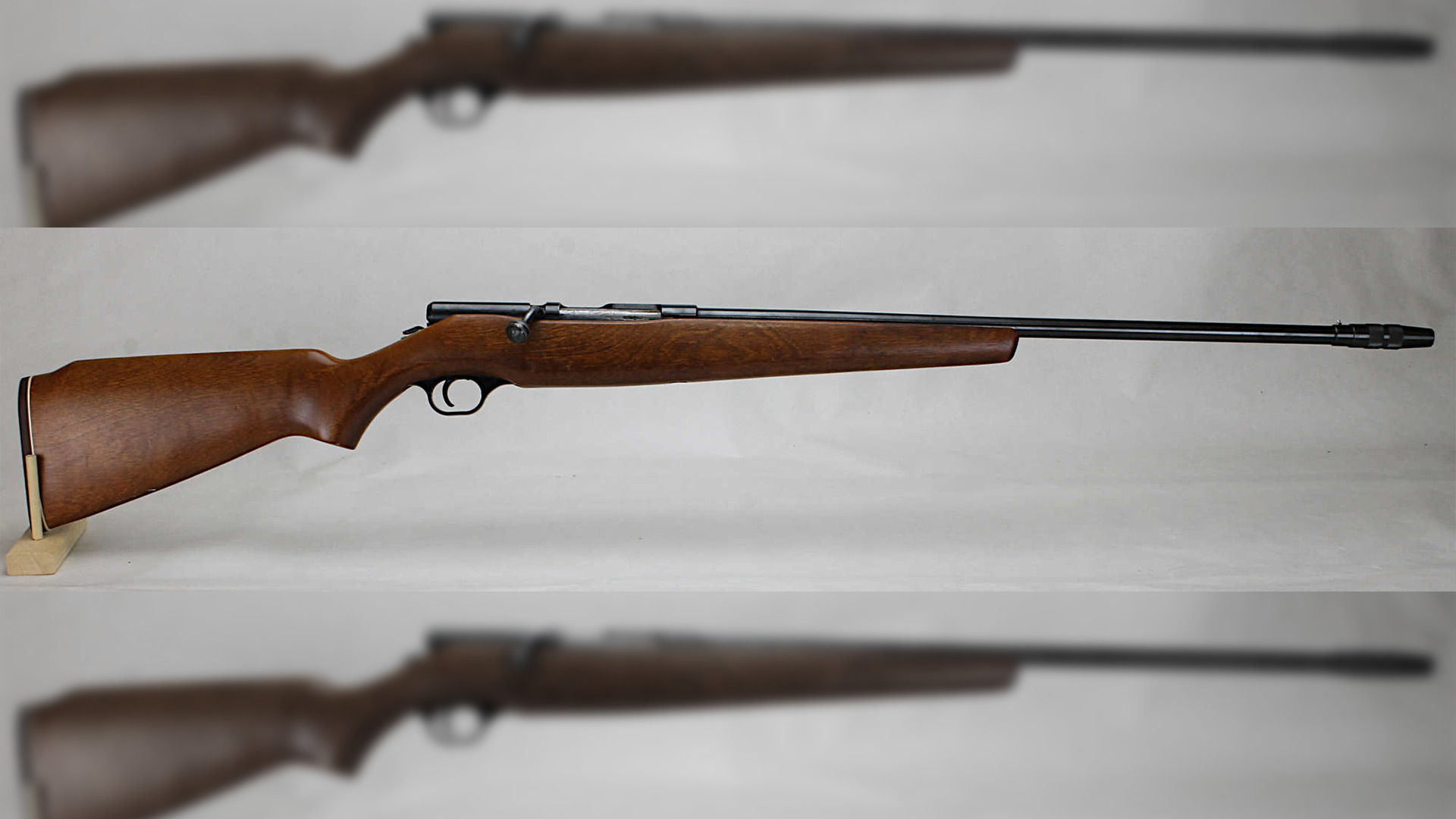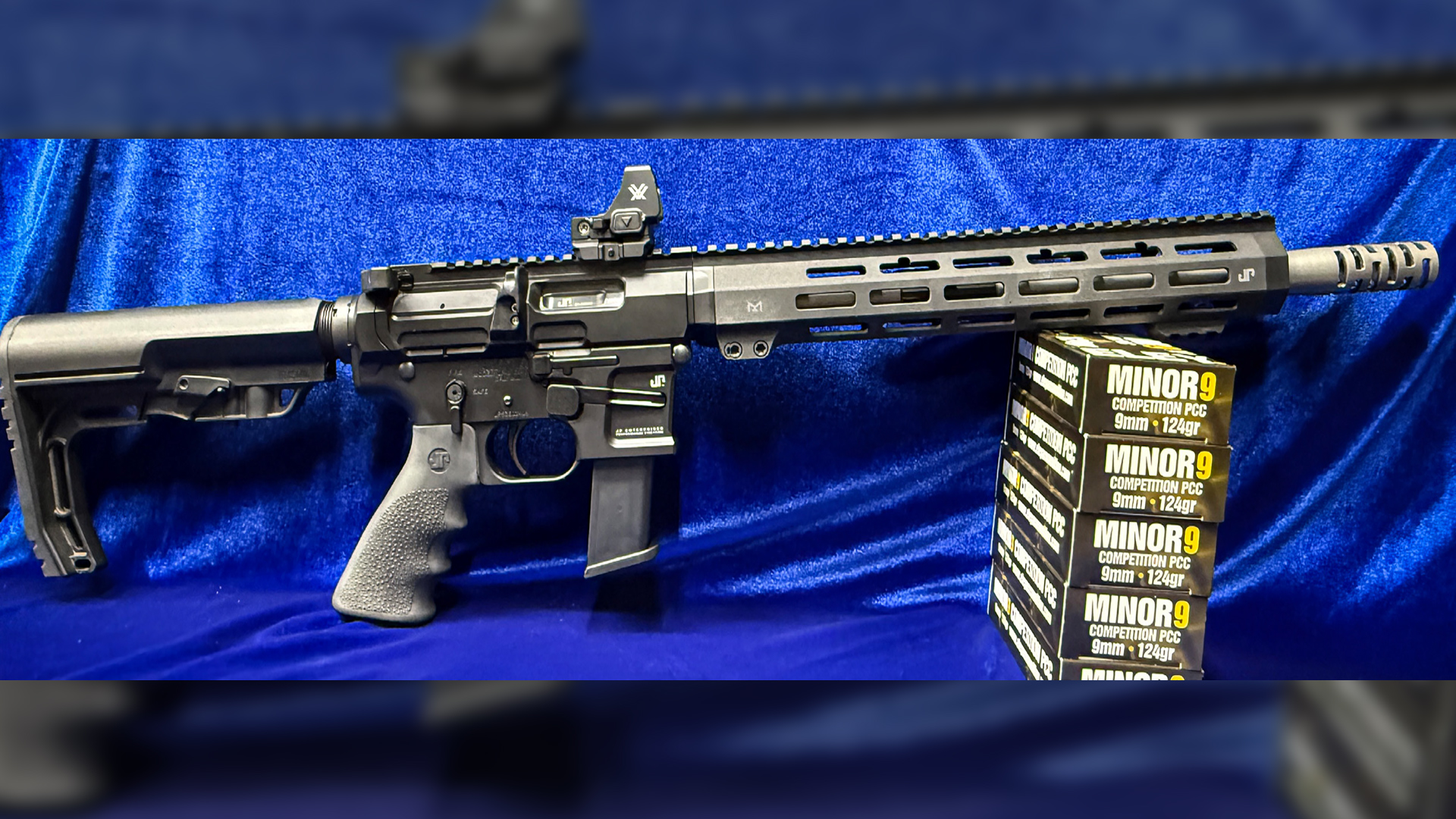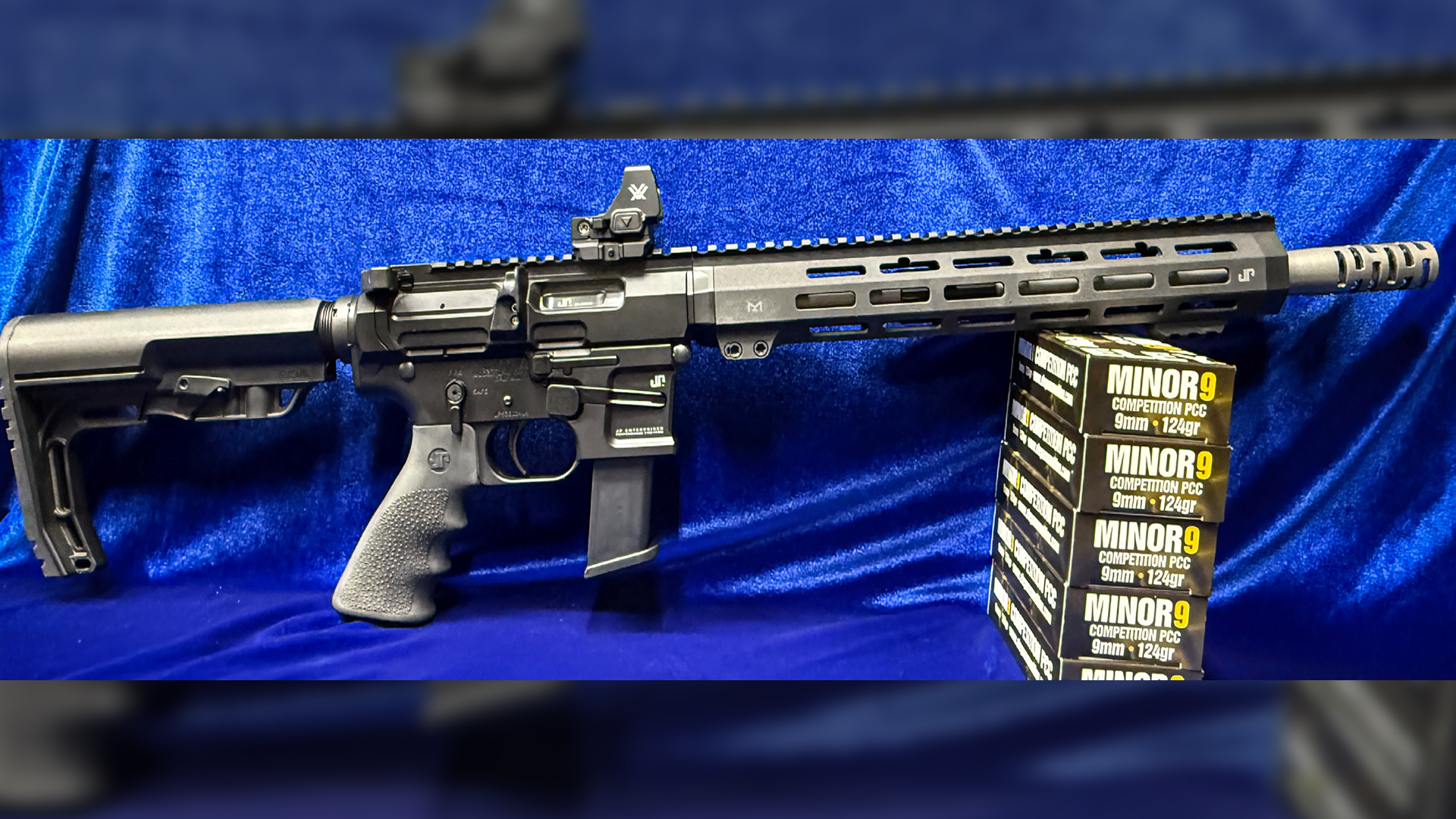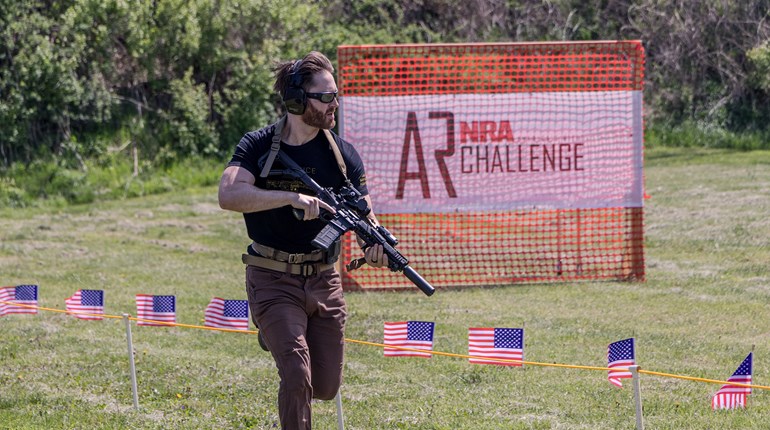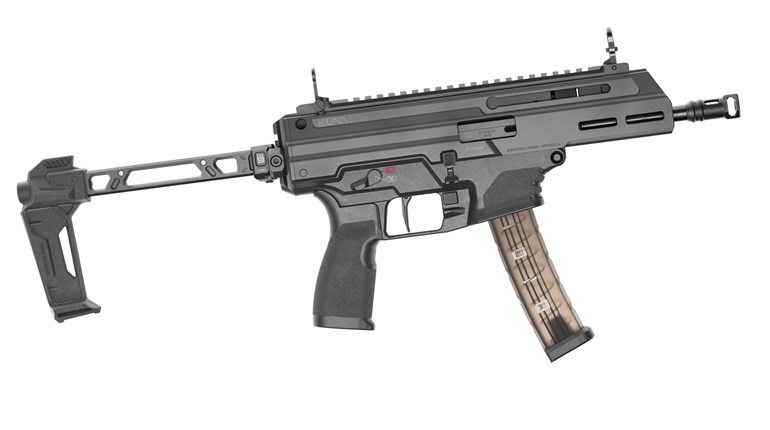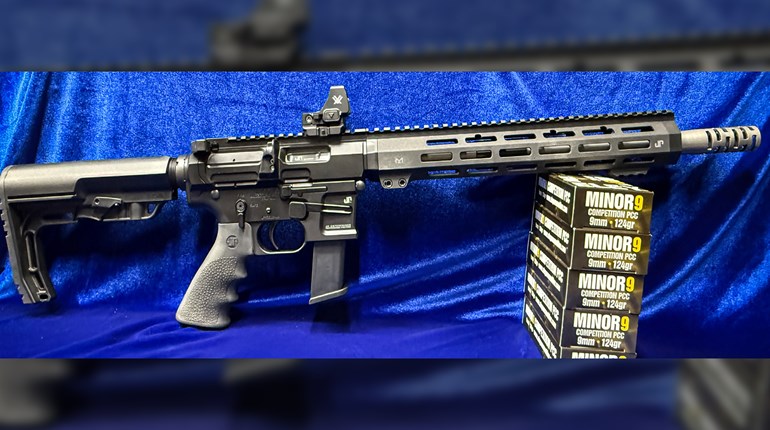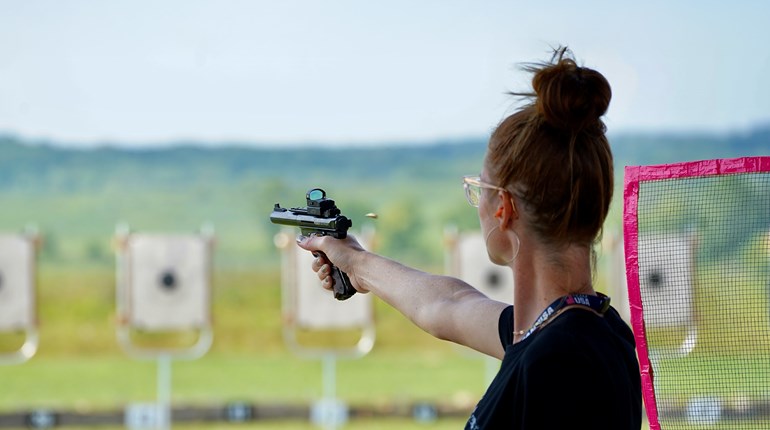
Last year marked one decade of business since Langdon Tactical Technologies officially became a company. Known for its upmarket Beretta 92 variants and other customizations of various firearms, the Arizona-based outfit transitioned from Ernest Landgon literally selling polished Beretta 92 trigger parts in baggies or working on guns on the side to now being fully staffed. In celebration of its first decade, Langdon Tactical Technologies produced a limited run of 100 Beretta 92 Elite LTT pistols that include unique LTT-exclusive touches and parts. It didn’t take long for them to sell out, and I’m fortunate that a kind reader loaned me his specimen, gun No. 74, for this review.
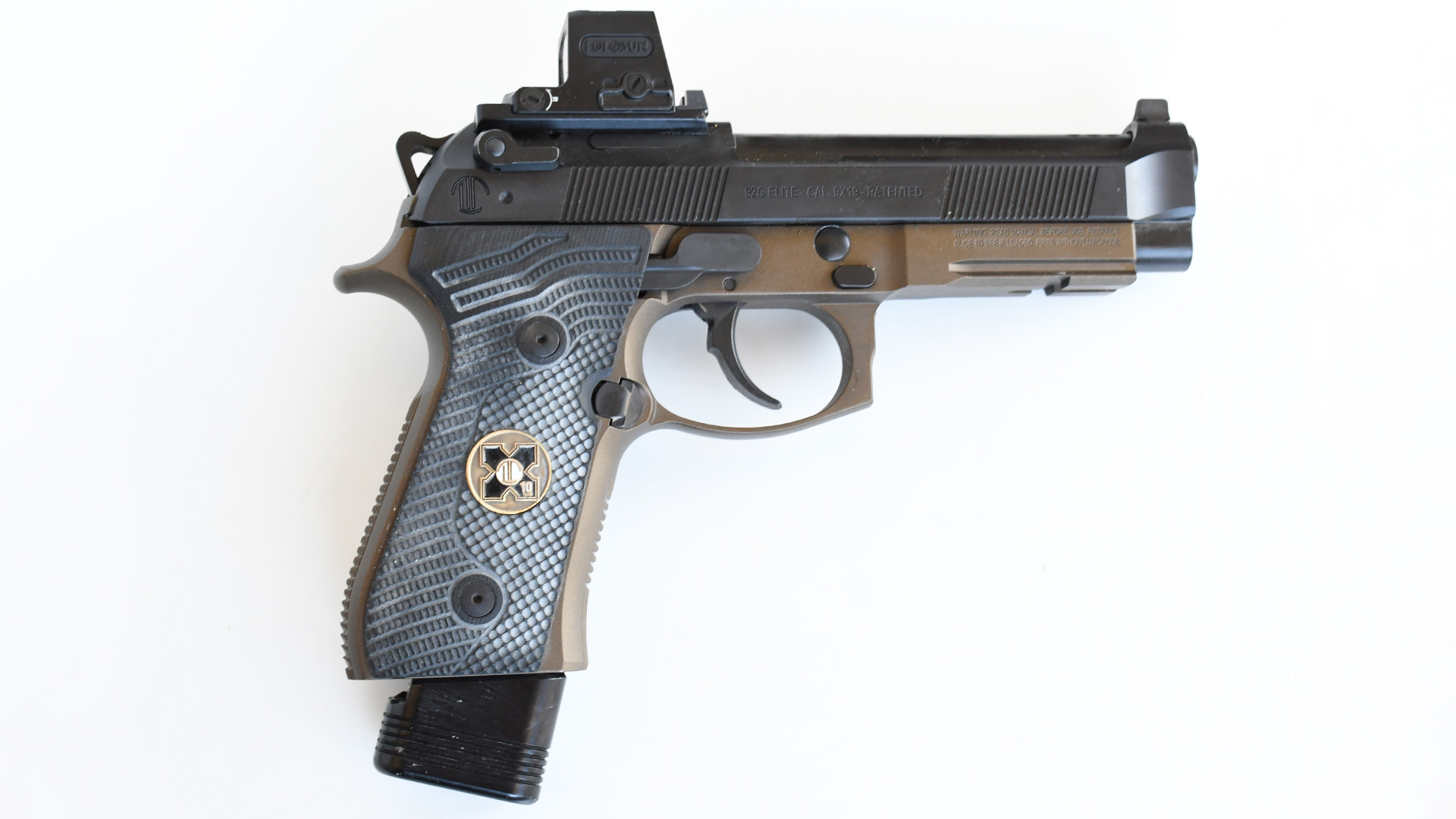
As a special production item, the 9 mm Beretta 92 Elite LTT 10th Anniversary model is regaled with a unique livery consisting of a Cerakoted bronze frame and black-nitrided slide along with other details that denote its specialness. The pistol itself is based on the full-size traditional double-action (TDA) Beretta 92 Elite LTT RDO with a 4.7-inch ported barrel and an assortment of tuned Langdon Tactical components. Every handgun from this batch is specifically outfitted with a Holosun EPS six-MOA red-dot sight and LTT’s EPS/Holosun-K footprint optics plate. These pistols also include LTT’s trigger job and the LTT Optimized Performance trigger bar.
92 Elite LTT Action
All Beretta 92 pistols—including the Elite LTT 10th Anniversary—rely on the classic Beretta 92 locking-block system to cycle ammunition. The original locking-block scheme dates to the World War II-era German Walther P38. After the war, the locking block jumped from Germany to Italy where Beretta engineers implemented it into the Beretta M1951 Brigadier. Beretta’s locking-blocking actions persisted, later finding their way into early Beretta 92 models of the mid-1970s. The Beretta locking-block action continued to prove itself after the original Beretta 92SB-F won the U.S. Army XM9 trials to replace the aging M1911A1.
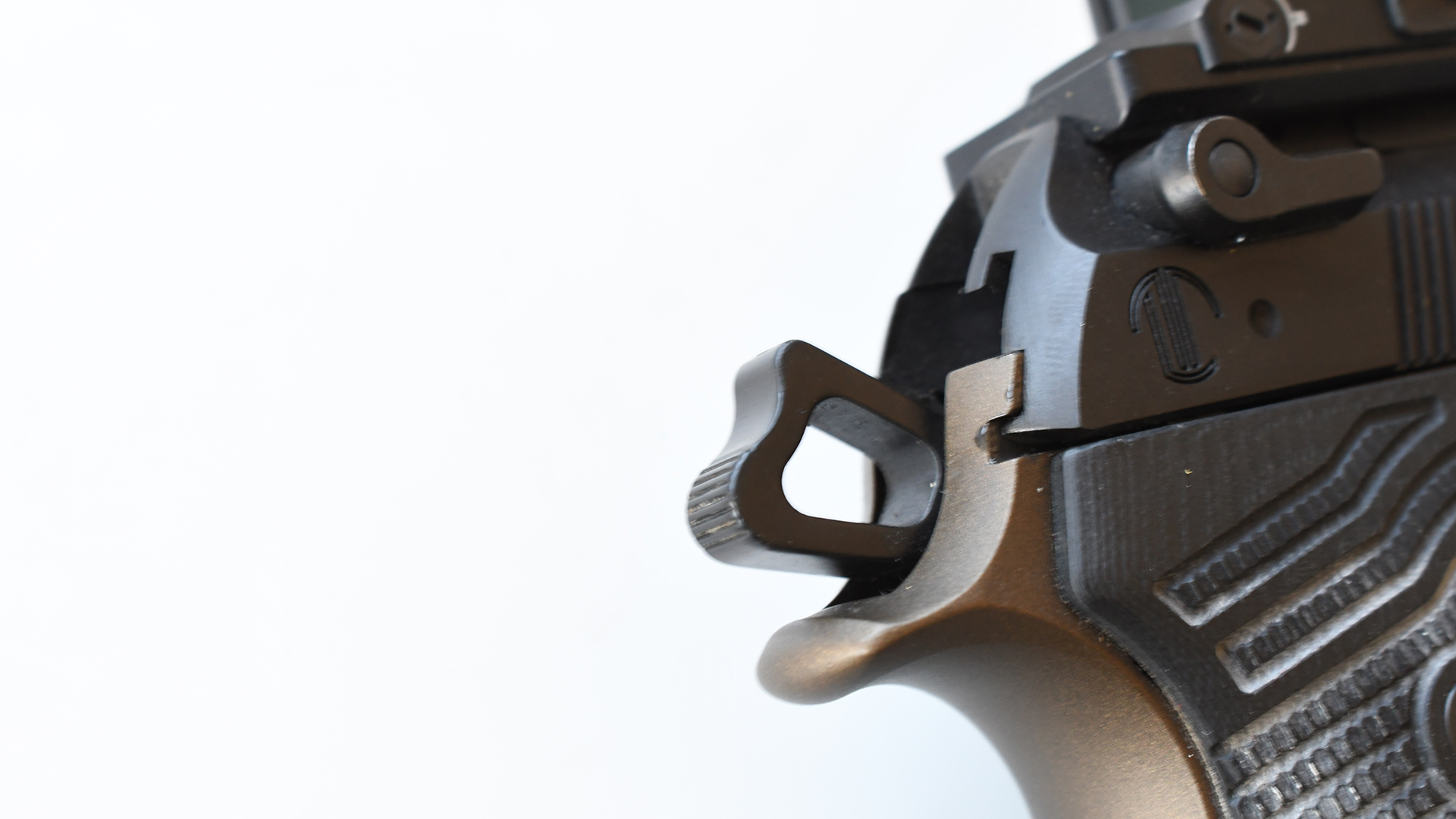
The current iteration of the Beretta 92 locking block has proven itself to be reliable. It’s also a simple, elegant solution for a semi-automatic, recoil-operated action. A wedge-shaped piece with two tabs that hinges underneath the barrel naturally rests so that the tabs are pushed up against the slide, thus locking it in place (with the aid of the recoil spring’s tension). Once the fired bullet escapes the muzzle, and the slide and barrel begin moving rearward due to inertia, the force of the slide pushes the tabs of the locking-block down and out of the way so the slide can keep moving until its rebound point. Once the slide clears the tabs, they rebound back into position until the next shot is fired. Beyond the ability to cycle a wide variety of ammunition, this results in an extremely smooth and “linear” recoil impulse, since the slide and barrel only need to reciprocate back and forth; the barrel never needs to tilt.
Frame, Grip & Stocks
The 92 Elite LTT 10th Anniversary is built on a bronze Cerakote M9A1-pattern frame that includes extra touches and passes carried out in accordance with LTT’s specifications like extra chamfering around the trigger guard, the rounding out of the point in front of the magazine catch recess and the omission of the “football cut” around the opening of the mainspring housing on the bottom of the frame.
Otherwise, LTT frames have the same attributes as any other M9A1 frame, including a railed dustcover. Most importantly, these frames keep the original Beretta 92 grip profile with the rounded backstrap. I find this grip profile to be more ergonomically efficient as it alleviates excess pressure between the middle finger and the junction of the trigger guard. The LTT-specific extra chamfering in this area is also a relief. The frontstrap and backstrap also retain the original M9A1’s neutral checkering pattern.

The LTT 10th Anniversary ships with a custom set of black G10 Thin Veloce stocks manufactured by LOK Grips. Both the left and right panels sport centrally embedded medallions with Langdon Tactical’s 10th anniversary monogram—the same design found on the collectible patch that ships with each pistol. The LOK Grips Thin Veloce stocks have an undulating contour with subtle palm swells on the top and bottom edges. These grip panels are extremely comfortable and because their thinnest point is right at the center on the same level with the medallions, it provides a sort of channel for your firing hand’s middle finger to clamp down with more force than normal. This is especially useful for one-handed shooting techniques. Beretta 92s have a poorly deserved reputation for grips that are too large and too wide; adding thinner stocks can drastically improve its ergonomics.
Barrel & Slide
The 10th Anniversary Beretta 92 Elite LTT—and all other 92 Elite LTTs—are built on modern slides with “G” (decock-only) levers and include a dovetail for the front sight. This might seem like a trivial detail, but original M9 and 92FS models had fixed front sights so customizing them wasn’t convenient. Likewise, all LTT 92 slides have a set of front and rear serrations.
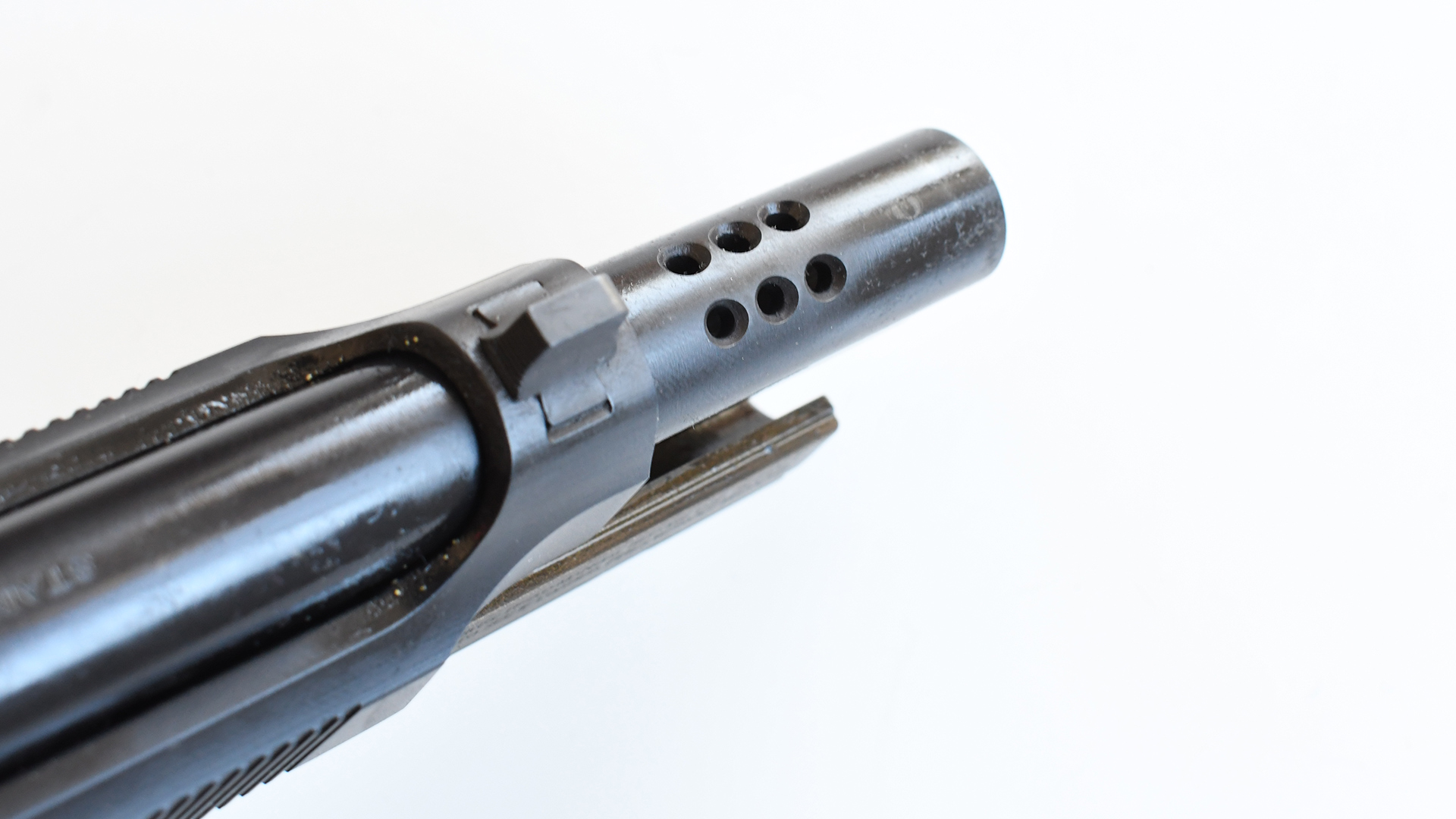
Each 92 Elite LTT 10th Anniversary model is numbered from 1 to 100, and its number is engraved on the rear left portion of the slide. Every gun also includes a stainless-steel ported barrel with six different ports, drilled three to a row behind the front sight’s bridge, on the forward portion of the slide. For tradition’s sake, the 4.7-inch barrel is cut flush with the slide and sports a recessed target crown, like the original Beretta 92G Elite II. For this limited-edition run, LTT finished entire slides, stainless-steel barrels and the metal guide-rods in black nitride to play off the frame’s bronze Cerakote hue.
Performance Parts
Like the barrel, stainless-steel guide rod and slide, the 92 Elite LTT 10th Anniversary’s small parts like the hammer, magazine catch, trigger and trigger bar are also black nitrided. The 10th Anniversary pistols also include small parts that pay homage to other classic Beretta variants. For example, these guns incorporate the Beretta Elite II-style skeletonized hammer and the Beretta Billennium-style oversized checkered steel magazine catch. The combination of the LTT Optimized Performance trigger bar, which has a slightly different geometry than the standard trigger bar, along with the signature LTT trigger job, makes for a gun with smooth double- and single-action trigger pulls.
Ten double-action trigger pulls with my electronic scale averaged eight pounds, two ounces, and 10 single-action trigger pulls averaged two pounds, 12 ounces. I own a Wilson Combat Beretta 92 Brigadier Tactical with a similar trigger job and the corresponding wonderful double- and single-action pulls, but I can feel the difference that the LTT Optimized trigger bar provides—it’s shaped in such a way that it not only requires less pressure to break the shot, but also provides a near instantaneous reset. My review gun had its Wilson Combat-style magazine guide removed to accommodate competition-style extended basepads.
Sighting System
The Beretta 92’s architecture is such that its slide is fairly tall. Among other things, adding optics and plates to these slides can be challenging, especially from a height perspective. The specific addition of the Holosun EPS (six-MOA), a proven enclosed-emitter reflex sight with one of the lowest deck heights on the market, is a wise call. This low deck height alleviates some drawbacks faced by other reflex sights.

The LTT EPS/Holosun-K optics plate has auxiliary rear sights machined directly onto the front of the plate and cowitnesses neatly with the plain, serrated front sight. Independently of Langdon Tactical, it’s my opinion that the Holosun EPS reflex sight is the current best option to mount on any Beretta 92 due to how it sits. From a performance shooting standpoint, the EPS window size does not concern me.
At The Range
As mentioned, I was fortunate enough to have this pistol on-loan for the review. Its owner is an avid competitor with a USPSA Grand Master classification. He’s been competing with the 92 Elite LTT at USPSA matches in Open Minor division for the past few weeks to the tune of nearly 1,500 rounds fired without issue; these are mostly his 124-grain match handloads.
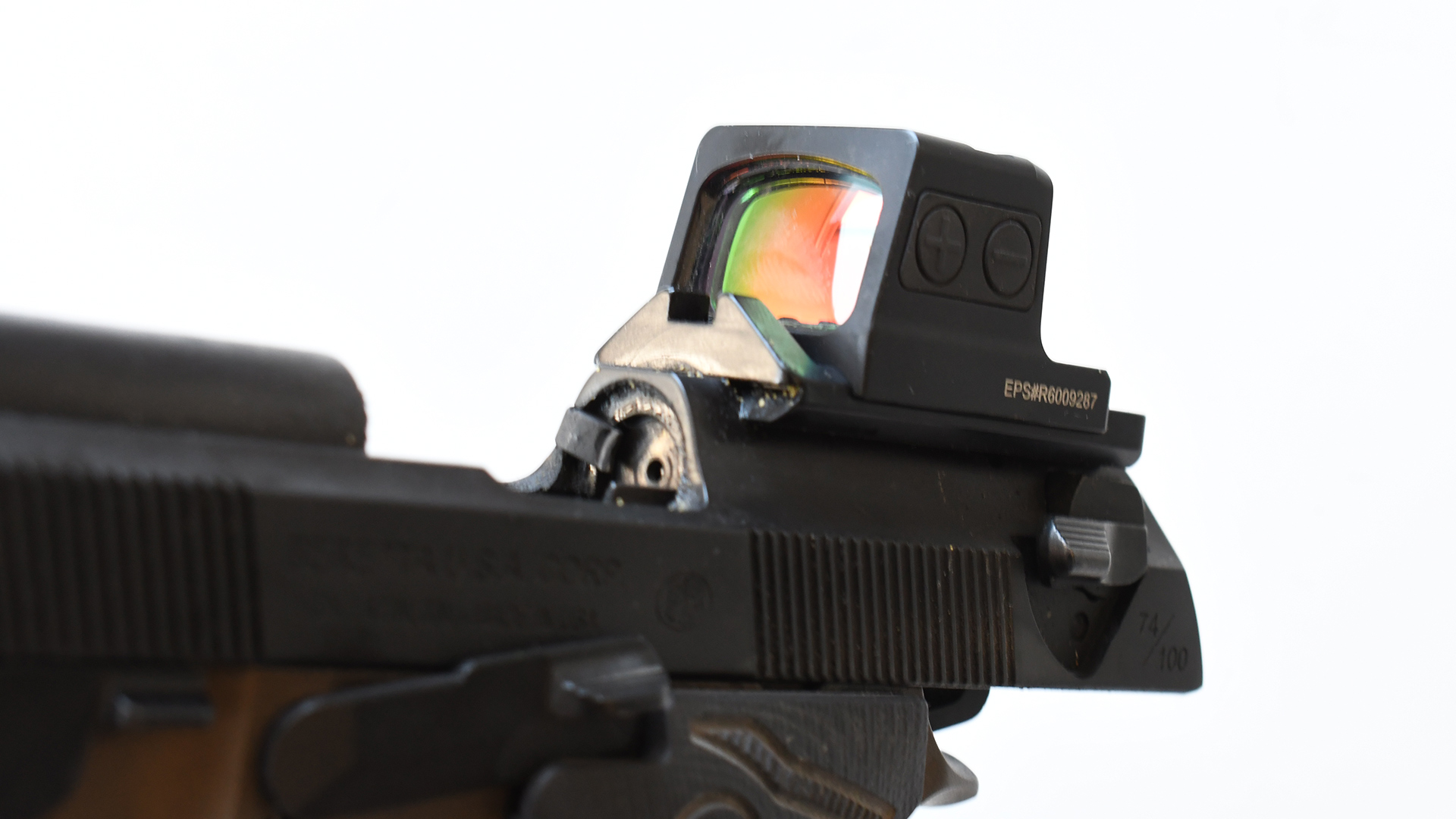
During the course of my review with No. 74, I’ve fired nearly 200 rounds of my own including different factory loads, including HOP Munitions 147-grain Poly RN, Federal 115-grain Syntech TSJ and Staccato 124-grain Range FMJ. Unfortunately, I didn’t have the opportunity to shoot this 92 Elite LTT 10th Anniversary at any action-pistol matches like I normally do for my reviews, so I made the best of it at the range. In addition to shooting for groups off the bench, I spent some time doing slow-fire shooting and working on transitions, getting the gun nice and hot. This Beretta really doesn’t mind being handled aggressively; it won’t complain, it will just keep shooting. If you aren’t careful, this Beretta will deplete your stash of 9 mm into brass and smoke in no time.
Accuracy Table

Beretta 92 Appreciator’s Notes
I’m not new to the Beretta 92 and should disclose that I hold a soft spot for them; they’re true classics.
As a seasoned Beretta 92 enthusiast, reviewing the Beretta 92 Elite LTT 10th Anniversary model was a treat because ironically, this is the first Beretta 92 that I’ve handled with both a red-dot sight and a ported barrel. The combination of the 92’s locking-block action and its corresponding recoil impulse, in league with its trigger job and performance ignition parts, makes this an extremely easy-shooting pistol that’s easy to control in rapid fire. In addition to its locking-block, the all-metal construction makes this a soft-shooting 9 mm pistol.
The aforementioned locking-block mechanism is particularly lenient with a wide variety of ammunition. Despite the porting on the barrel, this handgun had no issues cycling the competition-focused HOP Munitions 147-grain Poly RN loads, a cartridge which is both subsonic and formulated to meet USPSA/IPSC Minor power factor.
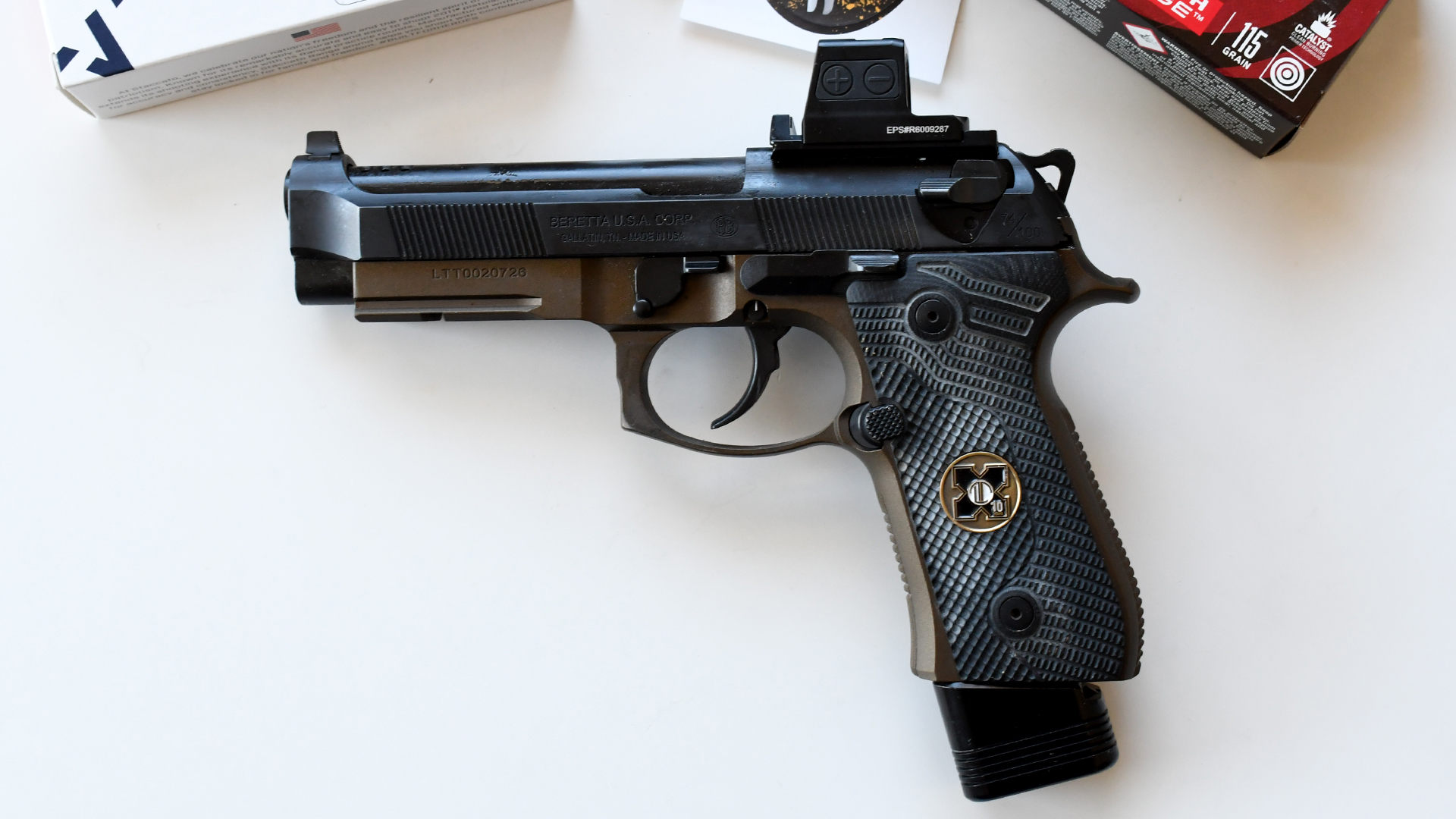
There’s no sense in complaining about a double-action trigger pull on a TDA pistol, it would be like complaining about sand at the beach. But once that first trigger pull is mastered, the less than three-pound, single-action trigger pull is rewarding and allows the shooter to take full advantage of this pistol, performance-wise—be it slow and deliberate shots or blazing-hot splits. Likewise, the Beretta 92 gets a bad reputation for having a slide-mounted decocker, but barring an annoying FS-style safety, this part is fairly ambidextrous.
Being an older design, I do have my nitpicks about these guns (not the LTT 10th Anniversary model specifically). Beretta 92s aren’t fully ambidextrous and the curved bottom portion of their trigger guards can become slippery against the support hand in hot, humid conditions compared to pistols with a flat trigger guard (think CZ Shadow 2). I also think the frontstrap could be 1/4-inch longer.
Because of their architecture, Beretta 92s are also not the easiest guns to install reflex sights on, but the LTT RDO cut, especially when paired with the ultra-low-sitting Holosun EPS, seems to handle that. As for the rest of those nitpicks, the pistol’s positive attributes outweigh them all.
All 100 units of Langdon Tactical’s 10th anniversary production run have since sold out, but the good news is that you can still source a similarly built Beretta 92 and ride the locking-block with a high-performance pistol chambered in 9 mm Luger. Visit langdontactical.com.








